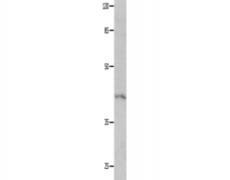|
Background: |
Potassium channels represent the most complex class of voltage-gated ino channels from both functional and structural standpoints. Their diverse functions include regulating neurotransmitter release, heart rate, insulin secretion, neuronal excitability, epithelial electrolyte transport, smooth muscle contraction, and cell volume. Four sequence-related potassium channel genes - shaker, shaw, shab, and shal - have been identified in Drosophila, and each has been shown to have human homolog(s). This gene encodes a member of the potassium channel, voltage-gated, shaker-related subfamily. This member contains six membrane-spanning domains with a shaker-type repeat in the fourth segment. It belongs to the delayed rectifier class, the function of which could restore the resting membrane potential of beta cells after depolarization and thereby contribute to the regulation of insulin secretion. This gene is intronless, and the gene is clustered with genes KCNA1 and KCNA6 on chromosome 12. Defects in this gene are a cause of familial atrial fibrillation type 7 (ATFB7). |
|
Applications: |
ELISA, WB |
|
Name of antibody: |
KCNA5 |
|
Immunogen: |
Fusion protein of human KCNA5 |
|
Full name: |
potassium voltage-gated channel, shaker-related subfamily, member 5 |
|
Synonyms: |
HK2, HCK1, PCN1, ATFB7, HPCN1, KV1.5 |
|
SwissProt: |
P22460 |
|
ELISA Recommended dilution: |
1000-2000 |
|
WB Predicted band size: |
67 kDa |
|
WB Positive control: |
Mouse heart tissue |
|
WB Recommended dilution: |
200-1000 |

 购物车
购物车 帮助
帮助
 021-54845833/15800441009
021-54845833/15800441009
